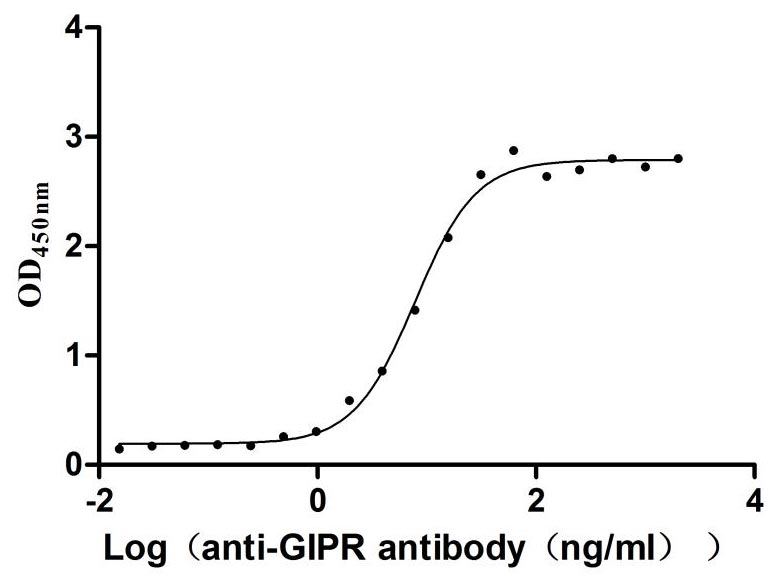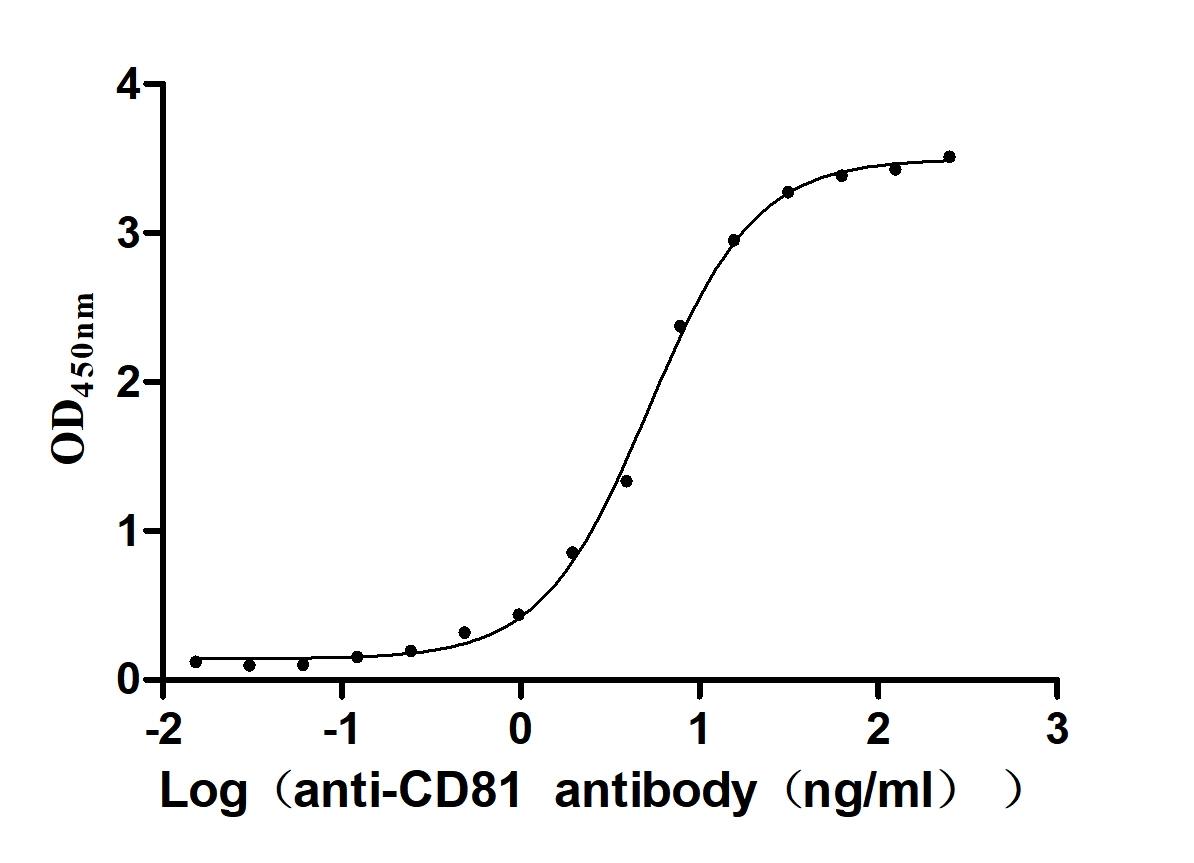Recombinant Mouse 60 kDa heat shock protein, mitochondrial (Hspd1)
-
中文名称:小鼠Hspd1重组蛋白
-
货号:CSB-YP010847MO
-
规格:
-
来源:Yeast
-
其他:
-
中文名称:小鼠Hspd1重组蛋白
-
货号:CSB-EP010847MO
-
规格:
-
来源:E.coli
-
其他:
-
中文名称:小鼠Hspd1重组蛋白
-
货号:CSB-EP010847MO-B
-
规格:
-
来源:E.coli
-
共轭:Avi-tag Biotinylated
E. coli biotin ligase (BirA) is highly specific in covalently attaching biotin to the 15 amino acid AviTag peptide. This recombinant protein was biotinylated in vivo by AviTag-BirA technology, which method is BriA catalyzes amide linkage between the biotin and the specific lysine of the AviTag.
-
其他:
-
中文名称:小鼠Hspd1重组蛋白
-
货号:CSB-BP010847MO
-
规格:
-
来源:Baculovirus
-
其他:
-
中文名称:小鼠Hspd1重组蛋白
-
货号:CSB-MP010847MO
-
规格:
-
来源:Mammalian cell
-
其他:
产品详情
-
纯度:>85% (SDS-PAGE)
-
基因名:Hspd1
-
Uniprot No.:
-
别名:Hspd1; Hsp6060 kDa heat shock protein; mitochondrial; EC 5.6.1.7; 60 kDa chaperonin; Chaperonin 60; CPN60; HSP-65; Heat shock protein 60; HSP-60; Hsp60; Mitochondrial matrix protein P1
-
种属:Mus musculus (Mouse)
-
蛋白长度:Full Length of Mature Protein
-
表达区域:27-573
-
氨基酸序列AKDV KFGADARALM LQGVDLLADA VAVTMGPKGR TVIIEQSWGS PKVTKDGVTV AKSIDLKDKY KNIGAKLVQD VANNTNEEAG DGTTTATVLA RSIAKEGFEK ISKGANPVEI RRGVMLAVDA VIAELKKQSK PVTTPEEIAQ VATISANGDK DIGNIISDAM KKVGRKGVIT VKDGKTLNDE LEIIEGMKFD RGYISPYFIN TSKGQKCEFQ DAYVLLSEKK ISSVQSIVPA LEIANAHRKP LVIIAEDVDG EALSTLVLNR LKVGLQVVAV KAPGFGDNRK NQLKDMAIAT GGAVFGEEGL NLNLEDVQAH DLGKVGEVIV TKDDAMLLKG KGDKAHIEKR IQEITEQLDI TTSEYEKEKL NERLAKLSDG VAVLKVGGTS DVEVNEKKDR VTDALNATRA AVEEGIVLGG GCALLRCIPA LDSLKPANED QKIGIEIIKR ALKIPAMTIA KNAGVEGSLI VEKILQSSSE VGYDAMLGDF VNMVEKGIID PTKVVRTALL DAAGVASLLT TAEAVVTEIP KEEKDPGMGA MGGMGGGMGG GMF
-
蛋白标签:Tag type will be determined during the manufacturing process.
The tag type will be determined during production process. If you have specified tag type, please tell us and we will develop the specified tag preferentially. -
产品提供形式:Lyophilized powder
Note: We will preferentially ship the format that we have in stock, however, if you have any special requirement for the format, please remark your requirement when placing the order, we will prepare according to your demand. -
复溶:We recommend that this vial be briefly centrifuged prior to opening to bring the contents to the bottom. Please reconstitute protein in deionized sterile water to a concentration of 0.1-1.0 mg/mL.We recommend to add 5-50% of glycerol (final concentration) and aliquot for long-term storage at -20℃/-80℃. Our default final concentration of glycerol is 50%. Customers could use it as reference.
-
储存条件:Store at -20°C/-80°C upon receipt, aliquoting is necessary for mutiple use. Avoid repeated freeze-thaw cycles.
-
保质期:The shelf life is related to many factors, storage state, buffer ingredients, storage temperature and the stability of the protein itself.
Generally, the shelf life of liquid form is 6 months at -20°C/-80°C. The shelf life of lyophilized form is 12 months at -20°C/-80°C. -
货期:Delivery time may differ from different purchasing way or location, please kindly consult your local distributors for specific delivery time.Note: All of our proteins are default shipped with normal blue ice packs, if you request to ship with dry ice, please communicate with us in advance and extra fees will be charged.
-
注意事项:Repeated freezing and thawing is not recommended. Store working aliquots at 4°C for up to one week.
-
Datasheet :Please contact us to get it.
靶点详情
-
功能:Chaperonin implicated in mitochondrial protein import and macromolecular assembly. Together with Hsp10, facilitates the correct folding of imported proteins. May also prevent misfolding and promote the refolding and proper assembly of unfolded polypeptides generated under stress conditions in the mitochondrial matrix. The functional units of these chaperonins consist of heptameric rings of the large subunit Hsp60, which function as a back-to-back double ring. In a cyclic reaction, Hsp60 ring complexes bind one unfolded substrate protein per ring, followed by the binding of ATP and association with 2 heptameric rings of the co-chaperonin Hsp10. This leads to sequestration of the substrate protein in the inner cavity of Hsp60 where, for a certain period of time, it can fold undisturbed by other cell components. Synchronous hydrolysis of ATP in all Hsp60 subunits results in the dissociation of the chaperonin rings and the release of ADP and the folded substrate protein.
-
基因功能参考文献:
- The ApoE-/- mice were fed with western-type diet and HSP60 was administrated orally or subcutaneously for potential vaccine against atherosclerosis. ApoE-/- mice with oral HSP60 administration group showed a significant reduction in plaque size at the aortic root; accompanied by increased Myeloid derived suppressor cells (CD11b+Gr1+) in peripheral blood and spleen. PMID: 29107690
- Low HSP60 expression is associated with beta-cell hypertrophy and dysfunction. PMID: 27056903
- HSP60 regulation of SOX9 ubiquitination mitigates the development of knee osteoarthritis. PMID: 27118120
- Overexpressing hsp60 in cultured myoblasts induced only the expression of PGC1 1alpha, suggesting a correlation between Hsp60 overexpression and PGC1 1 alpha activation. PMID: 26812922
- neonatal heart failure through HSP60 induction likely involves developmental defects and excessive apoptosis PMID: 26504810
- Heat shock protein 60 stimulates the migration of vascular smooth muscle cells via Toll-like receptor 4 and ERK MAPK activation PMID: 26477505
- TLR4 mediates HSP60-associated apoptosis and that HSP60 has an important role in cardiac myocyte injury, both apoptotic and necrotic. PMID: 25716072
- a direct toxic effect of heat shock protein 60 towards neurons and oligodendrocytes in the CNS involving Toll-like receptor4 and MyD88 pathways PMID: 25887709
- Dietary wolfberry elevated the xanthophyll concentrations and enhanced expression of BCO2 and heat shock protein 60, activated AMPKalpha2, potentiated mitophagy and mitochondrial biogenesis and enhanced lipid oxidation and secretion in the liver of mice. PMID: 24449471
- It is concluded that nasal administration of HSP60 can inhibit atherosclerotic formation through immune tolerance which is established by Tregs depending on the induction of anti-inflammatory cytokine TGF-beta. PMID: 22282240
- MnSOD is a substrate of the Hsp60 folding machinery. PMID: 24151936
- In type 2 diabetes, there is hypothalamic insulin resistance and mitochondrial dysfunction due to downregulation of the mitochondrial chaperone HSP60. HSP60 reduction was due to a lack of proper leptin signaling and was restored by leptin treatment. PMID: 24084737
- a novel interaction between APP and HSP60, which accounts for its translocation to the mitochondria. PMID: 22753410
- myocardial ischemia activates an innate immune signaling via HSP60 and TLR4, which plays an important role in mediating apoptosis and inflammation during I/R. PMID: 21775438
- This study characterized the agglutination effects of monoclonal antibodies to Hsp60 on H. capsulatum yeast cells by light microscopy, flow cytometry, dynamic light scattering, measuring zeta potential, and using optical tweezers. PMID: 21134968
- ApoB and HSP60 epitope immunization significantly reduces early atherosclerotic lesion in Apobtm2SgyLdlrtm1Her/J mice PMID: 20609438
- Hspd1 is an essential gene for early embryonic development in mice, while reducing the amount of Hsp60 by inactivation of one allele of the gene is compatible with survival to term as well as postnatal life. PMID: 20393889
- Results demonstrate that LOX-1 functions as a receptor for Hsp60. PMID: 20631313
- MK2 participates in the multifactorial regulation of early inflammatory responses in acute pancreatitis, independently of the regulation of stress proteins like HSP25 and HSP60 and most likely due to its effect on cytokine regulation. PMID: 20501446
- Rejection of murine allogeneic intestinal grafts is characterized by a progressive expression of hsp 60 in the epithelium. PMID: 15050156
- identification of a single C-terminal region, aa481-500, that accounts for the binding of HSP60 to macrophages PMID: 15196922
- Hsp10 exerts anti-inflammatory activity by inhibiting Toll-like receptor signaling possibly by interacting with extracellular Hsp60 PMID: 15546885
- Autoantibodies recognizing amino acid residues 288 to 366 of HSP60 induce atherosclerosis via the mechanisms of autoimmune reactions to HSP60 expressed on arterial endothelial cells, which can be prevented by F(ab)2 segments derived from these antibodies PMID: 16116071
- Transgenic overproduction of murine 60 kDa heat shock protein in the liver does not prevent type I diabetes in NOD mice. PMID: 16547598
- Naive CD4(+) T cells expressed high levels of CD25 and forkhead box P3 (Foxp3) after incubation with rapamycin-treated and HSP60-loaded DC and displayed moderate antigen-specific, IL-10-independent inhibitory function in vitro. PMID: 17324390
- endotoxin-free Hsp60 and LPS or Hsp60/LPS complexes employ different signaling mechanisms to transduce co-stimulatory signals PMID: 18256040
- anti-HSP60 autoantibodies may constitute an important prothrombotic risk factor in cardiovascular disease PMID: 19192108
- Up-regulation of TLR-2 by HSP60 may play a critical role in promoting bone loss in the estrogen-deficient state. PMID: 19306954
- Taken together, our results show for the first time that HSP60 modulates antimicrobial effector functions of neutrophil granulocytes. PMID: 19447897
- HSP60 and TLR-2 are novel mediators of estrogen-deficiency-induced bone loss. PMID: 19527807
- Inhibition of apoptosis by HSP60 was associated with up-regulation of the antiapoptotic molecules Bcl-2, Bcl-x(L), and survivin, maintenance of the mitochondrial transmembrane potential, and inhibition of caspase-3 activation PMID: 19561102
- Results characterize Hsp60 binding and Hsp60-induced release of proinflammatory mediators as fundamental properties of adipocytes independent of their differentiation state. PMID: 19647739
- Common targets include stress resistance proteins (Hsp60 and Hsp70) and enzymes involved in glucose metabolism such as enolase, glyceraldehydes-3-P dehydrogenase, fructose-1,6-biphosphate aldolase, pyruvate decarboxylase, and alcohol dehydrogenase. PMID: 15166233
显示更多
收起更多
-
亚细胞定位:Mitochondrion matrix.
-
蛋白家族:Chaperonin (HSP60) family
-
数据库链接:
Most popular with customers
-
Recombinant Human Prolactin receptor (PRLR), partial (Active)
Express system: Mammalian cell
Species: Homo sapiens (Human)
-
Recombinant Human Signal transducer CD24 (CD24)-Nanoparticle (Active)
Express system: Mammalian cell
Species: Homo sapiens (Human)
-
Recombinant Human Intestinal-type alkaline phosphatase (ALPI) (Active)
Express system: Mammalian cell
Species: Homo sapiens (Human)
-
Recombinant Macaca fascicularis Claudin 18.2 (CLDN18.2)-VLPs (Active)
Express system: Mammalian cell
Species: Macaca fascicularis (Crab-eating macaque) (Cynomolgus monkey)
-
Recombinant Human Interleukin-17A (IL17A) (T26A) (Active)
Express system: Baculovirus
Species: Homo sapiens (Human)
-
Recombinant Rat Gastric inhibitory polypeptide receptor (Gipr), partial (Active)
Express system: Mammalian cell
Species: Rattus norvegicus (Rat)
-
Recombinant Human CD81 antigen (CD81), partial (Active)
Express system: Mammalian cell
Species: Homo sapiens (Human)
-
Recombinant Human Killer cell immunoglobulin-like receptor 3DL2 (KIR3DL2), partial (Active)
Express system: Mammalian cell
Species: Homo sapiens (Human)


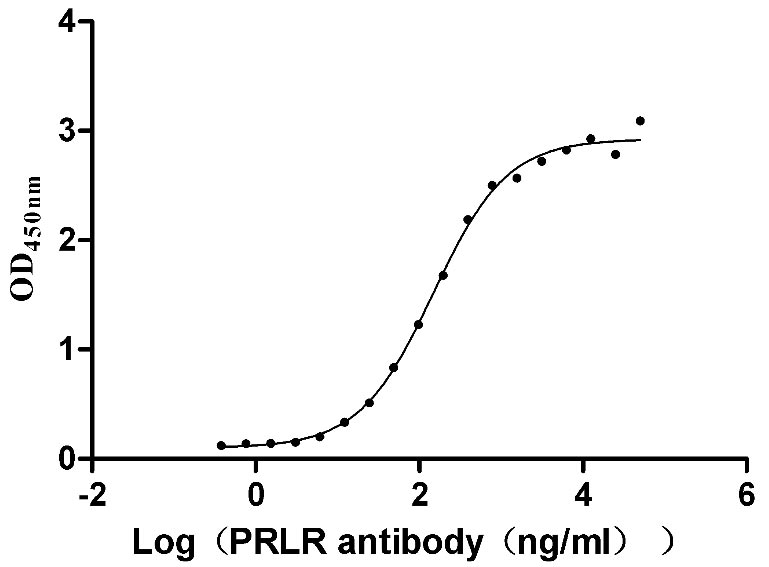
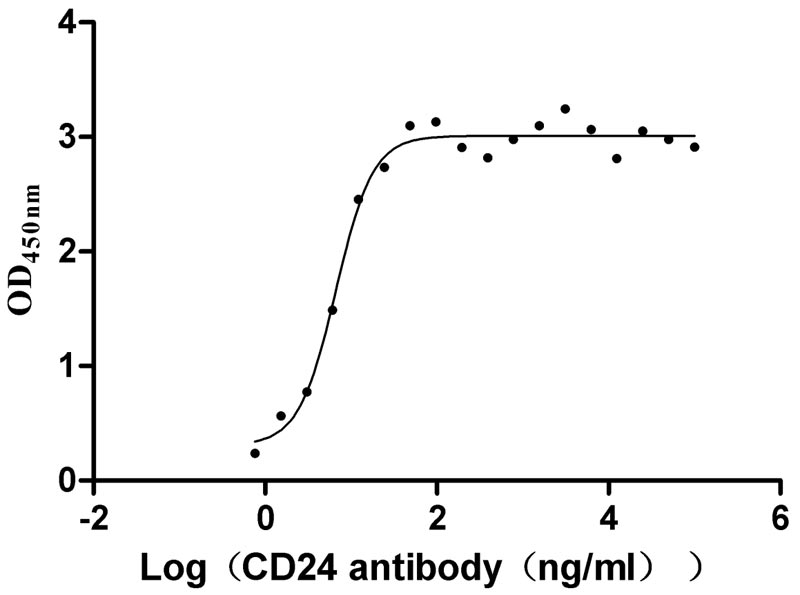

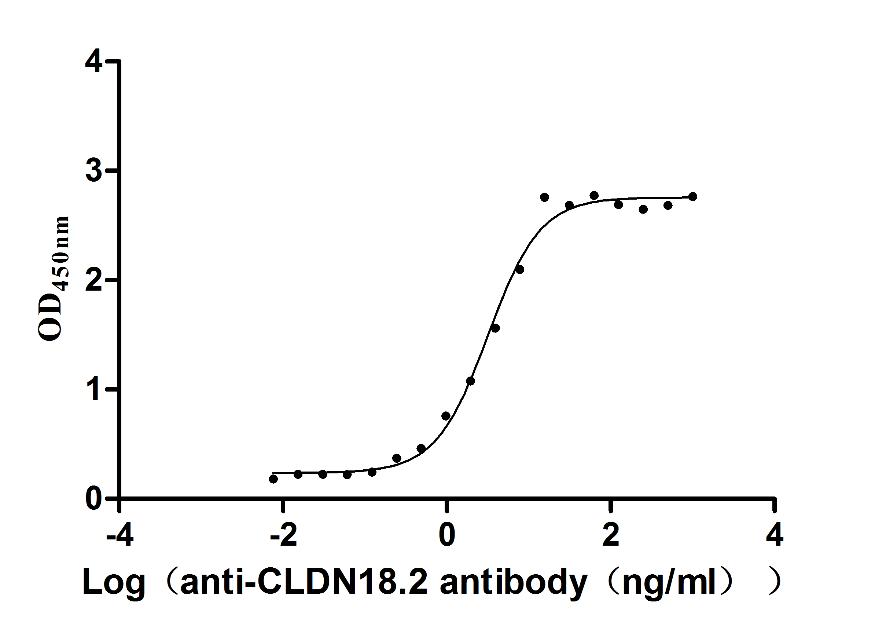
-AC1.jpg)
